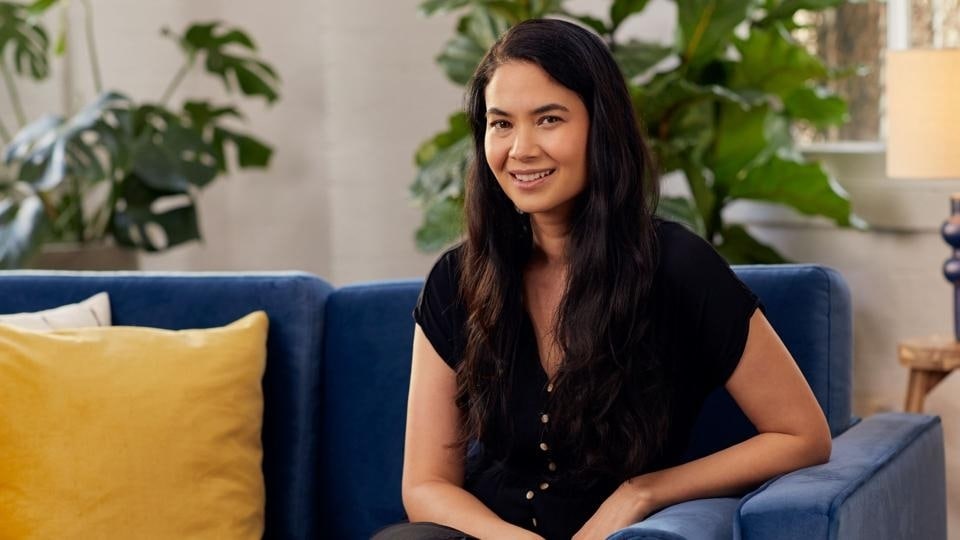AI is supercharging people’s productivity: Melanie Perkins, CEO of Canva
As Canva updates an already versatile designing suite, there’s focus on deeper integration with generative AI including Dall-E, Imagen by Google, MurfAI and Soundraw.

There's an irrefutable uniqueness to Melanie Perkins' approach towards running a tech company. The 36-year-old Australia based co-founder and CEO of Canva, a multi-platform designing suite, likes to make early bets on technology trends and indeed people who will use that tech. Unlike some of their competitors, premium subscriptions aren't priority, or a barometer of success.
“We believe people should be able to design and they should be able to design completely for free, regardless of their economic circumstance,” Melanie Perkins who is co-founder and CEO of Canva, details the premise defining the very structure of a designing suite that has become incredibly popular over time. Competition has been tough for Canva. Adobe's Creative Cloud, Prezi and Fotor, come to mind.
The Australia based tech CEO tells HT that Canva is built to be accessible and useful for users who may be looking at tools for completing a school assignment or create a resume to apply for their first job. Two demographics that may not always have purchasing power, on their side. Numbers testify to an approach that's so far been successful, a foundation on which the new Magic Studio tools, build with.
Canva rakes in $1.7 billion in annual revenue. There are 150 million monthly active users across web and mobile apps, of which 16 million are paying subscribers.
It is one of the most versatile designing tools to use, even on the free tier (though there's an even more powerful Canva Pro that costs ₹3,999 per year). The strategy has worked well, as numbers illustrate. “We've been very intentional about is not introducing a new tier, so it's all within our existing products,” Perkins confirms, as the new Magic Studio rolls into town.
Canva added 65 million users, in just the last year.
This long-term vision too is apparent with latest set of extensive updates now rolling out for all users. The new Magic Studio adds ten new AI based tools for image and video edits, presentations, translators, and new data privacy options. A lot of it is single click functionality, as you'd expect with well implemented generative AI.
For instance, translating a presentation into different languages, including many Indian languages such as Hindi. Perkins confirms translate works with more than 100 languages, globally.
There is text-to-imaging too, a generative AI tool that's become very popular. Microsoft's Bing AI image creator, OpenAI's Dall E, Adobe Firefly and Midjourney, are some well-known examples.
Canva is staying true to its legacy, even as the new AI tools usher in the next stage.
“When we explained the concept for Canva, more than a decade ago, we said that the design industry was extraordinarily fragmented,” says Perkins. “People would have to go to different products to get stock photography, to get templates and layouts and fonts. And you have to use different programs for presentations, websites, social media graphics, marketing materials and videos. Our whole premise was to integrate into one platform,” she adds.
Much of the new Magic Studio's extensive AI integration, will also be available to users who haven't subscribed to a premium plan, that is, the free tier users.
Some tools that caught our attention include Magic Grab (makes the subject in a photo an editable element, such as for editing or repositioning), Magic Expand (uses AI to recover image data from outside a frame, to change orientation), Magic Edit (text prompt to add, change or replace elements in an image) and Magic Switch (auto-translate text on a design or presentation).
In terms of language support, features including Magic Media, Magic Expand, Magic Grab, Magic Morph, and Magic Edit will have extensive support for languages spoken in different parts of India – Assamese, Gujarati, Hindi, Kannada, Maithili, Malayalam, Marathi, Punjabi, Sindhi, Tamil, and Telugu.
A big addition is a marketplace for third-party apps too, which means Canva users will have greater access to generative AI tools including Dall-E, Imagen by Google, MurfAI and Soundraw. This is part of Perkins' vision of “deep, deep integration”, to make Canva more versatile for users.
“We are integrating natively an incredible number of products that our team has been working on for a number of years now. And that's extraordinarily exciting and very much first party integrations. But if you happen to love Dall-E or Google's Imagen, you're able to integrate that as an app inside the Canva ecosystem as well,” she says.
It is not just smarts with imaging, but Canva is making steady progress towards relevance for video creation and editing, as well as productivity focused tasks including designs for presentations, adding animations and using AI to draft social media posts or even newsletters.
“The 10 years of investment into a full visual suite at ranging from docs to presentations, websites, videos, printed products, is now being supercharged with AI. I think we've always focused on filling a huge gap in the market and that's what we've done for the last decade,” Perkins is proud of what Canva continues to achieve.
In the rush to widen the scope of Canva with the new suite, with the powers of generative AI, Perkins hasn't lost sight of the need for responsible implementation of artificially intelligent tools.
“We've invested extraordinarily heavily in the trust and safety aspects of Canva. It's been an incredibly important aspect. We were introducing something called Canva Shield, which helps pull together all the aspects that companies deeply care about,” she says. “So, ensuring there's indemnity for our enterprise clients to ensure that there's appropriate tracing. Trust and Safety safeguards to put the control for the company to control of their own data and privacy,” Perkins adds.
Canva Shield, for individual and enterprise users, brings in controls for opting out of data use. The options include not participating in data sharing to improve Canva's AI features or sharing the content you've created to become part of a data set to improve machine learning for future implementation.
Perkins details the Creator Compensation Program, a $200 million commitment for the next three years, to be paid out to the creator community who consent to their content use to train proprietary AI models. By default, settings are set to “opt out”, which means sharing data requires manual toggle for consent. “Which unsurprisingly, many are choosing to do so,” she points out, with a smile that mirrors relief at the level of trust users indicate with Canva's privacy systems that are in place.
“Things like reporting to ensure that you know if we're continuously improving the systems, automated content moderation, block terms and so many considerations that we've had to invest in very deeply to ensure that is at the trust,” she says.
I asked Melanie Perkins about her vision for responsible AI, and regulation. She is very clear that the first step towards that is for platforms to ensure AI tools aren't being used for what she describes as “nefarious purposes”.
She details how Canva with 150 million monthly active users, adds pressure to ensure they are conscientious. For instance, people's names will not pass through the filters for Magic Write, and neither will any of the tools allow medical advice to be conveyed via the content created within Canva's updated suite.
Catch all the Latest Tech News, Mobile News, Laptop News, Gaming news, Wearables News , How To News, also keep up with us on Whatsapp channel,Twitter, Facebook, Google News, and Instagram. For our latest videos, subscribe to our YouTube channel.

























